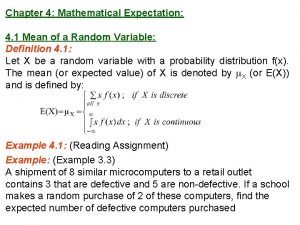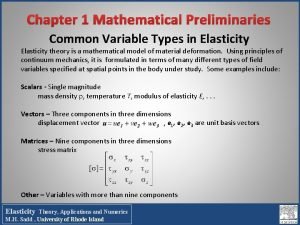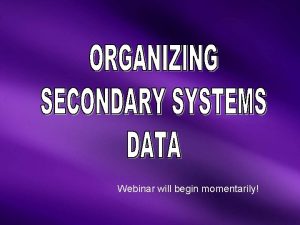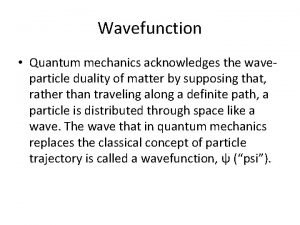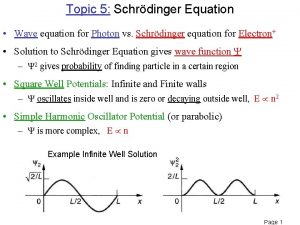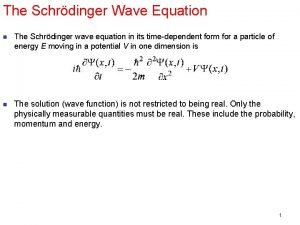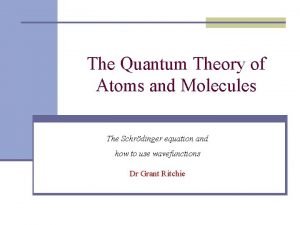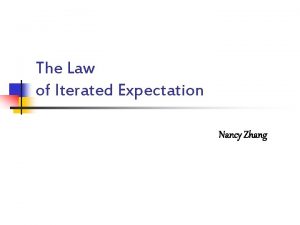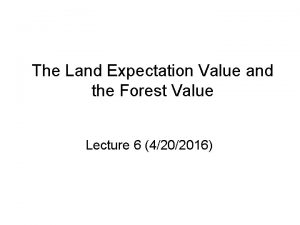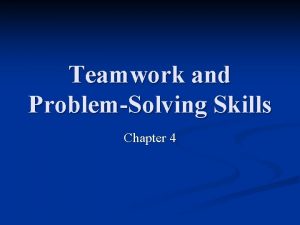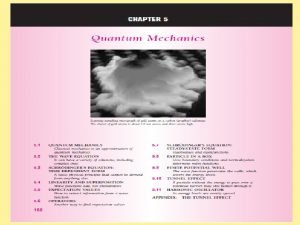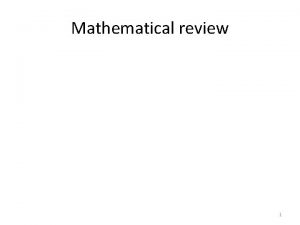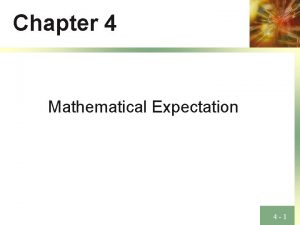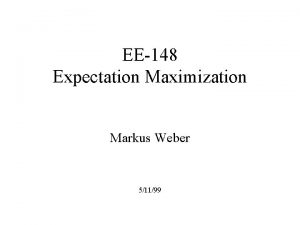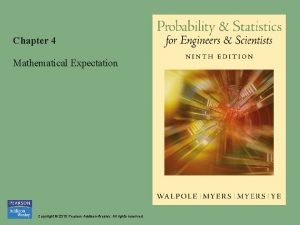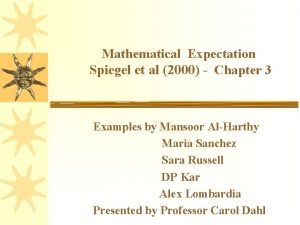Chapter 7 Expectation 7 1 Mathematical expectation 7













- Slides: 13

Chapter 7 Expectation 7. 1 Mathematical expectation

7. 1 Mathematical Expectation Mathematical expectation =expected long run average Simulation 1: toss a fair coin H 1, T 0. n=10 times: 1 0 1 Average=0. 7

More flips n=100: 000100101 001111010 01001110101110 average=0. 51 1 0 1 1 0 0 1 1 0 0 0 0 1 1 0 1 0 0 0 0 1 1 0 1 1 0 n=10, 000, we would expect to get 5000 heads and 5000 tails. average=0. 508

What is the value for expected long run average? Conjecture: ½ ½ probability to get 0, ½ probability to get 1 (½) (0)+ (½) (1)=1/2

Roll a die With equal probabilities 1/6 x 1 2 3 4 5 6 p(x) 1/6 1/6 1/6 Toss 6000 times about 1, 000 of each x-value.

Roll some more Some simulations: Roll n=10 times: 6564634122 Average=3. 9 x<-round(runif(10)*6+0. 5) n=100 10, 000 100, 000 Average 3. 56 3. 527 3. 5008 3. 49386 Average 3. 49949 3. 5

For numerical outcomes Get x with probability P(x) Values x 1 x 2 … xk Prob p 1 p 2 … pk P(X 1) P(X 2) … P(Xk) Mathematical expectation of X is given by E=E(x)= x 1 p 1+x 2 p 2+…+ xkpk = x 1 p(x 1)+x 2 p(x 2)+…+ xkp(xk)

Raffle ticket x p(x) $0 $100 199/200 1/200 This is the population mean for the population of possible ticket prizes. 0 0 1 out of every 200 tickets 0 100

Example 7. 1 Toss a fair coin until a head or quit at 3 tosses Expected tosses needed? X P(x) 1 ½ H 2 ¼=(½) TH 3 ¼ TTH, TTT E(X)=(1)(½)+(2)(¼)+(3)(¼)=1. 75 If we repeated this experiment over and over, we would average 1. 75 tosses.

Example 7. 3 Gambling: A and B roll two dice. If A’s number is larger, A wins dollars for the amount he got on the top of the die, otherwise, A loses $3. Expected gain of A?

Solution x P(x) -3 21/36 2 1/36 3 2/36 4 3/36 5 4/36 6 5/36 E=7/36

Example X=# of birds fledged from a nest x 0 1 2 3 p(x) 0. 2 0. 4 0. 2 1. 0 What is the expected value of x? On average, how many birds are fledged per nest?

1 3 2 2 20% 0 0 20% 1 40% 2 20% 3 m=1. 6
 Definition of mathematical expectation
Definition of mathematical expectation Mathematical vs non mathematical economics
Mathematical vs non mathematical economics Chapter 1 mathematical preliminaries
Chapter 1 mathematical preliminaries Introduction and mathematical concepts
Introduction and mathematical concepts Expectation for webinar
Expectation for webinar Expectation value of hermitian operator
Expectation value of hermitian operator Expectation value of energy in quantum mechanics
Expectation value of energy in quantum mechanics Expectation value in quantum mechanics
Expectation value in quantum mechanics Expectation value in quantum mechanics
Expectation value in quantum mechanics Law of iterated expectation
Law of iterated expectation Expectation value
Expectation value The process of making an expectation a reality
The process of making an expectation a reality General solution of wave equation
General solution of wave equation Pray with expectation
Pray with expectation
